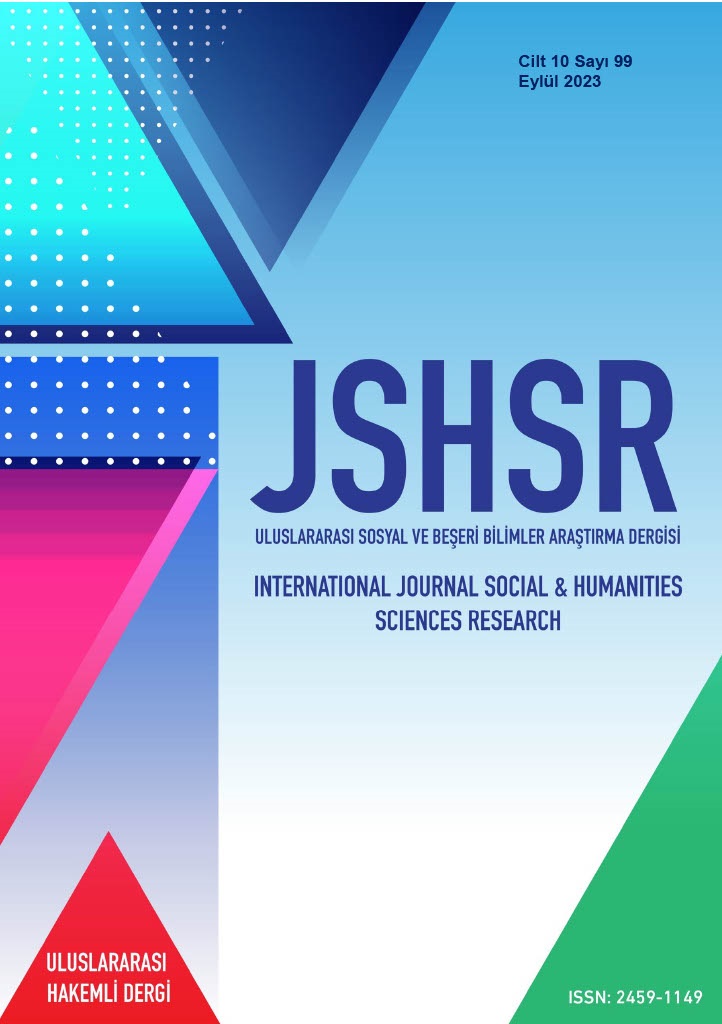Inferences of Urban Resilience from Traditional Anatolian-Turkish City
DOI:
https://doi.org/10.5281/zenodo.8396547Keywords:
Urban resilience, Sustainable urban development, Anatolian-Turkish cities, Waqf system, Imaret systemAbstract
This study examines the connections between urban resilience and the characteristics of traditional Anatolian-Turkish cities. Throughout the centuries, Anatolian-Turkish cities have continued to grow while providing a prosperous environment for their inhabitants. The common features observed in these cities include the Waqf (charitable endowment) social structure and the Imarets (social complex) built with the support of this structure. Together, the waqf and imarets form a system that plays a significant role in meeting the needs of city residents and in the construction of cities. The combination of waqf and imaret systems enables the establishment of balanced connections between urban and rural areas, thereby facilitating healthy urban development. Furthermore, the social practices provided by this system have been utilized as positive and effective tools in addressing environmental and social problems encountered during the urban development process. With its characteristics, the waqf-imaret system presents an effective model for achieving urban resilience, which is a crucial requirement in today's context for economic, social, and environmental sustainability. This model contributes to balanced urban growth, a healthy urban lifestyle, and societal well-being. It should be considered as a guiding framework in efforts aimed at establishing urban resilience in contemporary cities.
References
Albers, M. & Deppisch, S. (2013). Resilience in the light of climate change: useful approach or empty phrase for spatial planning. European planning studies, 21(10),1598-1610.
Allan, P. & Bryant, M. (2011). Resilience as a framework for urbanism and recovery. Journal of landscape architecture, 6 (2), 34–45. https://doi.org/10.1080/18626033.2011.9723453.
Ahern, J. (2011). From fail-safe to safe-to-fail: sustainability and resilience in the new urban world. Landsc. urban plan,100 (4), 341–343. https://doi.org/10.1016/j.landurbplan.2011.02.021.
Bruce A., Brown C., Avello P. & Beane, G. (2020). Human dimensions of urban water resilience: perspectives from Cape Town, Kingston upon Hull. Mexico City and Miami water security 9 (100060). https://doi.org/10.1016/j.wasec.2020.100060
Cinner Je &. Barnes ML (2019). Social dimensions of resilience in social-ecological systems. One Earth 51–56.
City Resilience Index (2014). Research Report Volume 1. Desk Study, Arup Rockefeller Foundation.
Chelleri, L. & Olazabal, M. (2012). Multidisciplinary perspectives on urban resilience: a workshop report. Basque cent climate change 1–81. https://www.ufz.de/export/data/1/44827_ MultidisciplinaryperspectivesonUrbanResilience_small.pdf#page=61.
Croese, S., Green, C. & Morgan, G. (2020). Localizing the sustainable development goals through the lens of urban resilience: Lessons and Learnings from 100 Resilient Cities and Cape Town. Sustainability, 12 (550),1-16 https:/ /doi:10.3390/su12020550
Feliciotti,A., Romice, O. & Porta, S.(2018). From system ecology to urban morphology: towards a theory of urban form resilience, reframing urban resilience Implementation. Conference proceedings-short paper.
Folke, C. (2006). Resilience: the emergence of a perspective for social-ecological systems analyses. Glob. Enviroment. Chang. 16, 253–267. https://doi.org/10.1016/j.gloenvcha.2006.04.002.
Folke, C., Carpenter, S., Elmqvist, T., Gunderson, L., Holling, C.S. & Walker, B., (2002). Resilience and sustainable development: building adaptive capacity in a world of transformations. Ambio, 31(5), 437–440. https://doi.org/10.1579/0044-7447-31.5.437.
Godschalk, D. R. (2003). Urban hazard mitigation: Creating resilient cities. Natural hazards review, 4 (3), 136–143. https://doi.org/10.1061/(ASCE)1527-6988(2003)4:3(136).
Holling, C.& Ewing, S. (1971). Blind man's buff: exploring the response space generated by realistic ecological simulation models. Proe. Int. Symp. Statist. Eco1, (2), 207-29.
Kim, D., & Lim, U. (2016). Urban resilience in climate change adaptation: A conceptual framework. Sustainability, 8(4), 1–17. https://doi.org/10.3390/su8040405.
Mclellan, B., Zhang, Q., Farzaneh, H., Utama, N. A., & Ishihara, K. N. (2012). Resilience, sustainability and risk management: A focus on energy. Challenges. https://doi.org/10.3390/challe3020153
Meerow, S., Newell, J.P., Stults,M. (2016). Defining urban resilience: A review. landscape and urban planning, 147, 38-49 http://dx.doi.org/10.1016/j.landurbplan.2015.11.011
Motesharrei S., Rivas J., Kalnay, E.& Asrar, G. (2016). Modeling sustainability: population, inequality, consumption, and bidirectional couplingof the earth and human systems. National science review. 3(4), 470-494. https://doi.org/10.1093/nsr/nww081,
Özcan, K. (2005). Anadolu’da Selçuklu dönemi yerleşme sistemi ve kent modelleri. [Unpublished doctoral dissertation]. University of Konya Selçuk.
Özcan, K. (2010). Erken dönem Anadolu-Türk kenti ve mekansal öğeleri (Early Anatolian-Turkish town Anatolian Seljuk town and its spatial elements). Bilig-Türk Dünyası sosyal bilimler dergisi, 55,193-220.
Özcan, K. & Yenen, Z. (2010). Anadolu-Türk kent tarihine katkı: Anadolu Selçuklu kenti (XII. yüzyılın başından XIII. yüzyılın sonuna dek) (From the beginning of the 12th century to the end of the 13th century). Megaron, 5 (2), 55-66.
Riberio, P.J.G. & Gonçalves, L.A.P.J. (2019). Urban resilience: a conceptual framework. Sustainable cities and society 50. https://doi.org/10.1016/j.scs.2019.101625,
Spaans, M., & Waterhout, B. (2017). Building up resilience in cities worldwide –Rotterdam as participant in the 100 Resilient cities programme. Cities,61,109–116. https://doi.org/10.1016/J.CITIES.2016.05.011.
Tanyeli, U. (1986). Anadolu-Türk kentinde fiziksel yapının evrim süreci (11.-15.yy). [Unpublished doctoral dissertation]. University of İstanbul Teknik.
The Resilient City Network Research Report. Resilient cities https://resilientcitiesnetwork.org/our-story/ (Accessed 10 May 2023)
Tobin, G.A. (1999). Sustainability and community resilience: the holy grail of hazards planning. Environment hazards 1,13–25. https://doi.org/10.3763/ehaz.1999.0103
Wardekker, J. A., De Jong, A., Knoop, J. M., & Van Der Sluijs, J. P. (2010). Operationalising a resilience approach to adapting an urban delta to uncertain climate changes. Technological Forecasting and Social Change, 77(6),987–998. https://doi.org/10.1016/J.TECHFORE.2009.11.005
World Cities Report (2022). Envisaging the future of cities. Un Habitat for a better urban future.
Yenen, Z. (1999). Osmanlı dönemi Türk kentinde planlama kültürü. Tarihi, kültürü ve sanatıyla Eyüp Sultan sempozyumu III, 438-445. İstanbul.
Yenen, Z. (1992). Social and religious influences on the form of early Turkish cities of the Ottoman period. Journal of architectural and planning research, 9(4), 301-314.
Downloads
Published
How to Cite
Issue
Section
License
Copyright (c) 2023 INTERNATIONAL JOURNAL OF SOCIAL HUMANITIES SCIENCES RESEARCH

This work is licensed under a Creative Commons Attribution 4.0 International License.


